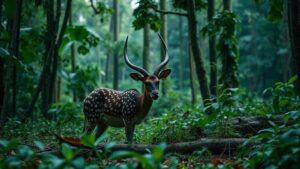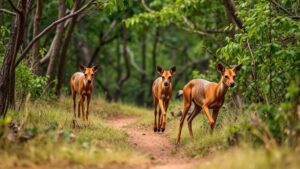Investigating the tales of fire-breathing cryptids said to emerge from volcanic vents in the Pacific Ring of Fire.
Investigating the Tales of Fire-Breathing Cryptids in the Pacific Ring of Fire
The Pacific Ring of Fire, a horseshoe-shaped region known for its seismic activity and volcanic eruptions, is not only a geological marvel but also a hotspot for mythical creatures and cryptids. Among these are the legendary fire-breathing entities said to dwell near volcanic vents. This article delves into the tales surrounding these cryptids, examining their origins, accounts, and cultural significance.
The Pacific Ring of Fire: An Overview
The Pacific Ring of Fire is a geological area that encircles the Pacific Ocean, stretching approximately 25,000 miles. It is home to 75% of the worlds active volcanoes and around 90% of the worlds earthquakes. This region includes countries like Japan, Indonesia, the Philippines, and parts of the United States such as Alaska and California. The extreme geological phenomena of this area have fueled countless myths and stories about creatures that dwell within its fiery depths.
Fires of Myth: Legends of Fire-Breathing Cryptids
The fascination with fire-breathing creatures can be traced back to ancient civilizations. Many cultures in the Pacific Ring of Fire share similar legends about dragons or serpent-like creatures. One notable example is the Bakunawa, a sea dragon from Philippine mythology, said to cause eclipses by swallowing the moon. Local legends often depict this creature as a fire-breathing entity that emerges from the depths of volcanic vents.
Another prominent figure is the Yamata no Orochi, a colossal serpent from Japanese folklore that breathed fire. According to the myth, this creature was defeated by the god Susanoo, and its lair, filled with treasures, was located near a volcanic area, emphasizing the connection between volcanic landscapes and fearsome beings.
Historical Accounts and Sightings
While many of these tales are rooted in folklore, there have been instances where locals claim to have witnessed these fire-breathing cryptids. One such account comes from the island of Java, Indonesia, where villagers reported sightings of a dragon-like creature near the Merapi volcano. The first recorded sighting dates back to 1885, when miners working in the area described a creature emerging from the smoky vent, emitting flames.
In more recent years, in Guatemala, reports similar to those in Java have persisted. Residents near the Volcán de Fuego have recounted stories of a fiery creature lurking among the volcanic clouds, igniting local legend and prompting further investigation into the tales and their origins.
Scientific Explanations and Theories
From a scientific perspective, the phenomena associated with the so-called fire-breathing cryptids can often be attributed to natural occurrences. For example:
- Volcanic Activity: Gases released during volcanic eruptions can create dramatic plumes and bursts of fire that resemble the legendary breath of a dragon.
- Thermal Vents: Hot springs and thermal vents can release steam and gases that, when ignited, simulate fiery emissions.
These explanations do not entirely debunk the folklore surrounding these creatures but offer a rational basis for many reported sightings. Also, the interplay between myth and nature often enhances cultural narratives, making these stories a significant aspect of local identity.
Cultural Significance of Cryptid Tales
The legends of fire-breathing cryptids are not merely fanciful tales; they reflect a deep interconnection between communities and their natural environments. e myths serve to:
- Teach lessons about respect for natures power.
- Explain the unpredictable behavior of volcanic activity.
- Foster a sense of community identity and continuity across generations.
In areas prone to volcanic eruptions, such stories often instill a cautionary approach to the land, reminding locals of their vulnerability in the face of natural disasters.
Conclusion: The Enduring Legacy of Fire-Breathing Cryptids
The stories of fire-breathing cryptids in the Pacific Ring of Fire encompass a blend of folklore, cultural identity, and natural phenomena. Although many of the assertions surrounding these creatures are rooted in myth, they underscore significant aspects of human experience–the blend of fear and fascination that volcanoes inspire. Whether seen as terrifying beasts or mere metaphors for nature’s fury, these cryptids will likely continue to captivate the imagination of both locals and enthusiasts alike.
As we explore these ancient tales, we also uncover valuable lessons about nature, culture, and the unyielding human spirit in the face of the unknown.



